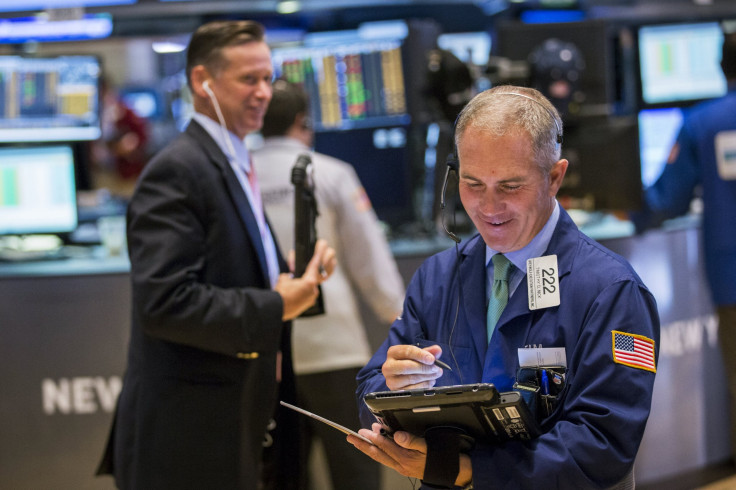Dow Jones Industrial Average Trades Flat Amid Retail Sales Data Before Fed Rate Hike Meeting

This story was updated at 1:20 p.m. EDT
U.S. stocks traded higher Tuesday, with the Dow Jones Industrial Average gaining 200 points in afternoon trading after opening flat as investors sorted through a series of economic data points ahead of the Federal Reserve’s highly anticipated two-day meeting later this week. Federal Reserve Chair Janet Yellen and policymakers will debate whether to raise U.S. interest rates, which would be the first increase in nearly a decade.
The Dow Jones Industrial Average (INDEXDJX:.DJI) rose 200 points, or 1.2 percent, to 16,568. The Standard & Poor's 500 index (INDEXSP:.INX) edged up 20 points, or 1.05 percent, to 1,973. The Nasdaq composite (INDEXNASDAQ:.IXIC) added 45 points, or 0.93 percent, to 4,850.
Seven of the 10 S&P 500 sectors traded higher, led by gains in energy stocks. Utilities were the biggest laggard, down 0.5 percent. Meanwhile, Dow component Chevron Corporation (NYSE:CVX) led the index higher, adding 2 percent, while Walt Disney Co. (NYSE:DIS) was the biggest laggard, down 1 percent.
The yield on the 10-year Treasury note traded flat, while the U.S. dollar gained against major world currencies, with the euro trading around $1.13.
Oil prices traded higher, with West Texas Intermediate crude, the benchmark for U.S. oil prices, up 1.75 percent to $44.77 per barrel for October delivery on the New York Mercantile Exchange. On the London ICE Futures Exchange, Brent crude added 0.6 percent to $46.65.
Uncertainty surrounding whether the U.S. central bank will announce an interest rate hike continued to weigh on global stocks Tuesday. China’s benchmark Shanghai Composite index finished down 3.5 percent, while Japan’s Nikkei index closed up 0.34 percent.
European stocks, however, closed higher following Asia’s weak lead. Germany's DAX and France's CAC rose 0.5 percent and 1.1 percent, respectively.
Market professionals eyed a series of retail sales and industrial production data points Tuesday, searching for further clues as to whether the Fed will announce raising rates at its two-day policy meeting this week, which kicks off Wednesday, followed by a statement from the Federal Open Market Committee at 2 p.m. EDT Thursday.
Industrial production, a measure of output for the industrial sector of the economy, declined 0.4 percent in August from a 0.9 percent rise in July, below than the expected 0.2 percent drop, the Federal Reserve said Tuesday.
Separately, U.S. retail sales rose in line with forecasts in August, suggesting the bout of financial turmoil last month did not cause a meaningful dent in consumption.
“Today's release will have little impact on the FOMC's policy meeting. It is roughly in line with expectations, confirming that consumer spending is increasing at a moderate pace,” Stuart Hoffman, chief economist at PNC Financial Services Group, said in a research note.
Although the headline retail sales increased by only 0.2 percent last month -- dragged down by a dip in gasoline station sales -- the so-called core retail sales, which correspond most closely with the consumer spending component of gross domestic product, came in stronger than expected.
Core retail sales, excluding automobiles, gasoline, building materials and food services, rose 0.4 percent after an upward revised 0.6 percent increase in July, the Commerce Department said Tuesday. The overall gain in headline sales was helped by a 0.7 percent increase in motor vehicle sales after auto sales hit a decade high in August.
Economists had forecast retail sales to rise 0.3 percent in August after a previously reported 0.6 percent rise in July, according to analysts polled by Thomson Reuters.
© Copyright IBTimes 2025. All rights reserved.






















